In this article we will be exploring the “Race to the Cloud”, its benefits and pitfalls. As a follow up to this piece, Strongbow will be dedicating our monthly webinar series to exploring some of the best-practices for evaluating your enterprise’s fit for The Cloud.
We’re all well familiar with the ‘Digital Revolution’, powered by Cloud-based technologies that are actively reshaping both the economics and operations of most enterprises. Given the advertised hype, it’s easy to assume that most enterprises, regardless of size or sector, now operate predominantly in the Cloud. We hear phrases like “Cloud First” and “Cloud Only”, which seem to imply that legacy infrastructure and the classic Data Center environment have all but disappeared. And yet nothing could be farther from the truth, especially for large enterprises who grew up with significant dependencies on critical, mainframe-based applications.
Let’s talk about the hype. Defined as the on-demand delivery of IT resources over the Internet, Cloud computing allows companies to replace the cost of their on-prem IT platforms with on-demand, consumption-based Cloud resources, converting significant amounts of capital investment to recurring operating expenses. On the surface, this sounds highly beneficial, and certainly seems to align with market trends that show the fast-growing adoption of Cloud computing. In fact, Covid-19 has accelerated plans for many enterprises to move to on-demand, usage-based Cloud services, leveraging external innovation to grow – or perhaps simply to survive. Gartner estimates 2019 Cloud spend was $250B, with 2020 now projected to surpass $266B in revenue.
And yet, the key question with enterprise Cloud migration is not “if”, or even “when” – but “how”. Despite the reported 83% enterprise adoption rate (per Flexera’s State of The Cloud 2020 report), most companies who run workloads in the Cloud, must still operate even larger, legacy platforms in traditional Data Centers in parallel. For many firms, most applications were not written to allow for an easy lift-and-shift into the Cloud, and the business cases to re-platform these applications lack a compelling ROI. Cloud providers now recognize this challenge and have recently introduced products to extend the Cloud on-premise such as AWS Outposts and the Azure Stack. With a proliferation of solutions now available, companies need to strike a thoughtful, dynamic balance between legacy, on-prem computing and Cloud based solutions. There are several considerations which should help shape planning and strategy in this space:
End-to-End Application Performance: While in recent years the Cloud has been moving closer and closer to the edge, some use cases (e.g. Point of Sale) require stringent control of application performance, making it difficult for Cloud based solutions to meet latency requirements for certain critical applications. Storage-intensive applications that process hundreds of TBs of data each day provide another example of performance constraints that affect the appropriateness of Cloud based solutions,
Security/Compliance: Do companies really know how the internal systems and operations of Cloud solutions are designed, operated, and secured? Likely not. Opportunities to physically audit and remediate Cloud security standards are quite limited for the leading providers, and enterprises must simply trust their providers care for their environments with acceptable standards. In addition, the evolving regulations requiring control of the environment, data residency, and consumer privacy make Cloud-based solutions for some applications infeasible at this time.
Cost Optimization: While the economic benefits of Cloud solutions have been described by many, there are just as many who have been unpleasantly surprised with the financial results after migrating workloads to the Cloud. The industry has been blanketed by tooling solutions that claim to automate the optimization of Cloud expenses. In our experience, this simply is not the case. Without applying insights into the applications, careful governance, ongoing monitoring, and human intervention (yes, real people), consumption-based services will grow uncontrollably, often exceeding the traditional cost structures they were meant to replace.
Vendor Lock-In: Even when enterprises properly manage Cloud deployments to reap the financial benefits of this technology, the hidden costs of vendor lock-in remain. Enterprise-grade commercial agreements with the Cloud providers are notoriously difficult to customize, and while the market is moving in the right direction, client protections in Cloud agreements do not come close to those protections typically contemplated in other IT Outsourcing agreements. Without the proper commercial protections, companies can unwittingly mortgage their future flexibility.
Business Continuity / Disaster Recovery: Even before Covid-19 and the industry’s mass adoption of remote infrastructure, Cloud based solutions required re-thinking traditional BC/DR approaches. While Cloud providers promise data solutions that are backed up and stored in multiple locations, without an audited plan of record, enterprise buyers cannot be assured of failover protections. For example, cloud-saturated geographies such as Northern Virginia could be massively impaired with a single natural disaster that could then cause ripple effects across the rest of the world.
Talent Availability (seen as Risk and Opportunity): Despite the call for more Cloud engineers, which has been sounded for many years now, the available pool of well-rounded Cloud expertise still falls short of industry needs. Without the right level of internal expertise on staff, optimizing both technical and financial performance falls onto the shoulders of the traditional Engineering team, who may not be equipped to address the demands of Cloud based solutions. In addition to technical aptitude, business acumen also matters greatly, as Cloud COEs and DevOps teams are looking to get more savings and innovation from Cloud services.
While arguably over-hyped, Cloud based computing is here to stay, and when positioned correctly, offers tremendous benefits to enterprises of all sizes across all industries. Indeed, whole industries have been built in the Cloud. But for large enterprises with legacy applications, the migration to a “Cloud Only” environment will simply take time – and for some, may never make sense. Rather instead a “Cloud Fit” approach will guide modernization efforts, as depicted in the Figure below.

As server migration to the Cloud is contemplated, application requirements, including data classification, business uptime, latency and cross-application dependencies must be considered. A “Cloud Fit” plan for modernization outlines a sensible migration path that begins with applications with low risk attributes. A longer-term strategy will carefully balance and coordinate IaaS, PaaS, SaaS components, preparing for an orderly migration over time, and allowing the enterprise to reduce its datacenter footprint while fully depreciating the assets prior to decommissioning. Ultimately the “Cloud Fit” approach identifies the optimal alternatives for each application, using business requirements to map against both legacy capabilities and Cloud options to find the ideal fit in terms of speed to market, application prioritization, and solid business case justification.
While most enterprises have targeted the Cloud as the ultimate destination to downscale existing datacenter infrastructure and maintenance expenses, they generally lack an actionable plan that pairs applications with infrastructure migration requirements, including a detailed register of risks, contingencies and ongoing governance methodologies. With proper planning, stakeholder analysis, and financial modeling, Cloud migration can become the cornerstone of the enterprise’s digital modernization strategy. However, many enterprise applications have vastly different infrastructure requirements, and a detailed approach that addresses applications’ unique attributes is critical for successful Cloud adoption. Beyond mapping application characteristics, it’s also important to tie applications to their underlying infrastructure, in order to identify and eliminate existing infrastructure costs. Unfortunately, connecting applications and infrastructure components can be exceedingly difficult, leading to stranded assets and bubble costs.
One other consideration in moving to the Cloud concerns the ongoing optimization of service utilization and variable costs. Prevailing wisdom (perpetuated by IaaS providers) is that tools and best practices like Cloud Center of Excellence (CCOE) are relatively easily deployed to control cloud costs. In reality, this approach does not optimize Cloud expenses. To identify and eliminate some 25-30% of financial waste, companies need to manage to the full context of application performance and business criticality (e.g. growth, cyclicality, and acceptable performance).
Simply making resizing and reservation decisions based on historical spend is akin to driving while looking in the rearview mirror. In our experience, companies who solely rely on vendor-provided tools have difficulty managing to forecast and overspend. Furthermore, CCOE-administered chargebacks by themselves do not solve the challenge of managing growing demand and continuously managing costs while satisfying the business needs. It’s a combination of tools, internal governances, and external expertise that seem to be the optimal approach to ongoing cost optimization.
Strongbow helps large enterprises build integrated public, private and hybrid Cloud solutions and ensure the planned migration strategy captures the targeted benefits of Cloud based technology, while maintaining the functionality, security and performance that the business demands for computing services.
Some examples of recent Strongbow engagements are:
Cloud Optimization for Leading North American Retailer
“Cloud Fit” Analysis Identifies Self-funding Migration to the Cloud
